India’s water crisis-like situation highlights the urgent necessity for maximum water conservation. Water is a resource that is becoming increasingly scarce all throughout the world, not just in India. Compared to other home activities, our gardens tend to require irrigation.
You may have an environmentally conscious outdoor space with some preparation and uncomplicated upgrades. Have a look at these eight clever strategies that will help you create gardens that are water-wise.
-
Following are a few steps that will help in good irrigation of your garden:
Avoid wastage of water while irrigation
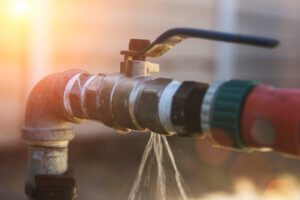 (Photo from istock)
(Photo from istock)
It’s critical to ensure that the water used for gardening is not being misused. Overwatering is harmful to plants and is not a sustainable technique. Be sure sprinklers do not flood other unplanted areas if you have them installed.
The needs of the plants you have grown and the local weather must be taken into account when programming automated systems to distribute water effectively. Consider using cans to water small and medium-sized gardens rather than hoses. You can use leftover kitchen water (from cooking, washing dishes, and other uses) in the garden as well. This also has the repercussions at the level of environment. Wastage of water while irrigation is very common phenomenon in crop yielding states of India. This problem should be addressed and proper and effective measures should be taken for the issue.
Go for native, low-maintenance plants
Obviously, plants that thrive in the region’s soil and climate require less upkeep. Search for local plants that are found there. You need to water in quantities according to the plant and soil type. Alternatively, choose low-maintenance, drought-tolerant plants that only require occasional attention.
Some low-water-consumption plants that are suited to the Indian climate include bougainvillea (Bougainvillea spectabilis), jarul (Lagerstroemia speciose), paradise tree (Simarouba glauca), spider plant (Chlorophytum comosum), sadabahar (Catharanthus roseus), and many others.
To minimize evaporation from the sun, it is better to water the plants early in the morning or early in the evening. By adding more ground cover plants and shade-loving trees, you can also keep the soil cool.
Start mulching
In order to keep the soil’s supplied moisture in place, mulching requires covering the soil with a porous layer of material. By spreading mulch to the base of the plant or tree so that the soil is evenly covered, it can be used on both tiny and large trees. The requirement for frequent watering is immediately decreased by decreased evaporation. Mulching reduces the growth of weeds and pests as well as saves water (as the non-planted area of soil is shielded). In domestic gardens, pebbles, rocks, straw, wood chips, compost, and fabric are some common types of mulch.
Build more hardscapes
Lawns and sparsely planted areas require more water and care in large gardens. Think of constructing decks, covered walkways, or outdoor seating areas in place of these spaces. As a result, less water is used, and temporary outdoor places are created.
Make sure your addition of hardscapes does not eliminate the garden-like quality of the area. When remodelling or redesigning your garden, it is always advisable to hire a landscape architect.
Install a drip irrigation system
 (Photo from istock)
(Photo from istock)
A drip irrigation system may function effectively in all situations, including small balcony gardens and vast lawns. Runoff, overwatering, and evaporation are all prevented by the pipe’s tiny apertures, or emitters, which allow watering at a very moderate rate. Both open spaces and boxed planters can accommodate its installation.
Top with a rain water harvesting system
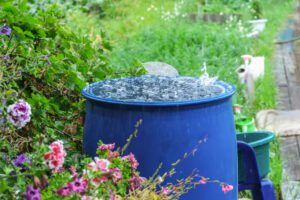 (Photo from istock)
(Photo from istock)
By catching the water that runs off of roofs and other hard surfaces, you may take advantage of the rainy season. An elaborate setup is not necessary for a rainwater collection system. Just direct rainwater that is falling down slopes into a gutter or a conduit that empties into a storage cistern.
Advice: Construct sizable storage cisterns in regions where it rains more frequently. To prevent the accumulation of insects and debris, keep the lids covered and wipe them frequently.
Adopt a rain garden
For this, you can either locate a naturally recessed location or excavate a section of your garden. Fill the depression with loose soil and native plants to make a rain garden. Rainwater can then permeate the soil and seep into the ground, increasing the amount of groundwater.
Advice: Avoid placing the rain garden next to or above septic tanks or buildings because the percolating water could harm the systems’ structural integrity.
Use permeable pavers
Strong, tightly-fitted blocks minimize soil erosion, and the holes make it easier for storm water to seep into the ground rather than collecting in unwelcome pools.
Most plants require frequent watering to survive, and even those that can withstand drought will need a drink now and then. The optimal way to meet your garden’s water needs depends on a variety of factors.
Consider how much water each plant will require when arranging your garden or yard spaces, and put related plants in the same groups. When all the plants in one area receive the same amount of water and at the same frequency, watering will be simpler to manage (and will help save water).

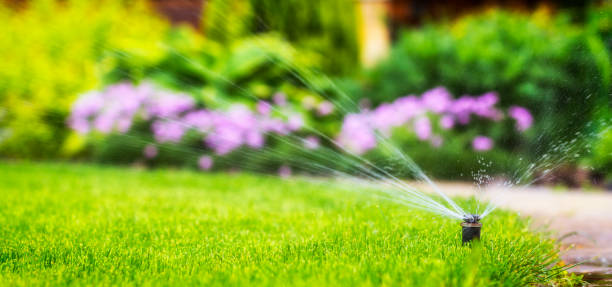

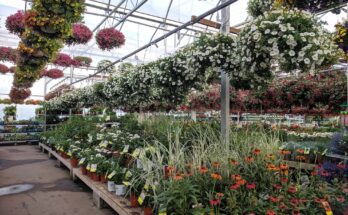
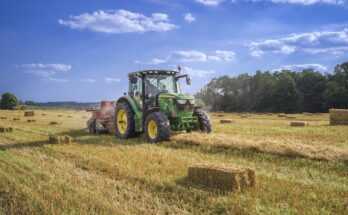
One Comment on “How to make good irrigation in your garden”